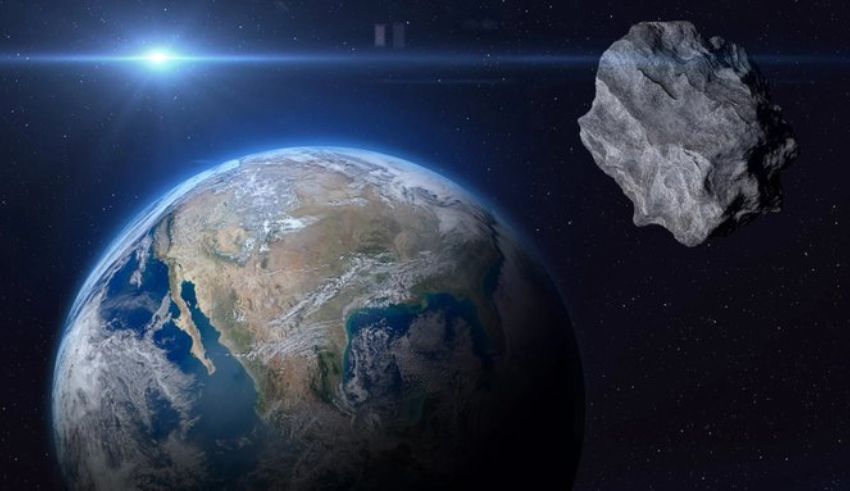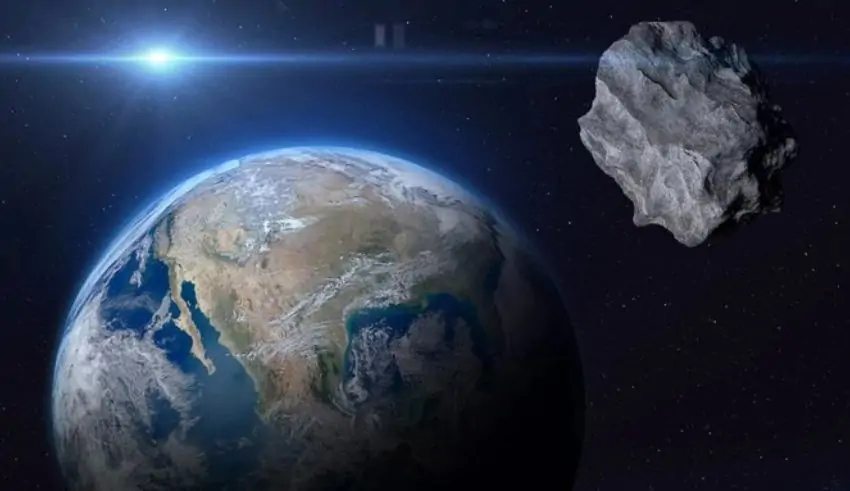

(C) NASA
Global panic is mounting as sensational news reports scream about a “planet killer” asteroid on a collision course with Earth. But before you start hoarding supplies and building a bunker, let’s take a moment to sort out the facts from the fiction.
It’s important to understand that astronomers are constantly monitoring near-Earth objects (NEOs) – asteroids and comets whose orbits bring them close to our planet. While some media outlets might blow the potential dangers out of proportion, a true “planet killer” – an asteroid large enough to cause mass extinction – is incredibly rare.
Regarding this specific asteroid, while details are still emerging, astronomers have likely gathered more accurate data than the initial sensationalist reports suggest. Their calculations can accurately determine the object’s size, trajectory, and the probability of an impact.
The most probable scenario is that this upcoming encounter will be just a close call. Asteroids frequently pass Earth at vast distances, and even smaller ones often disintegrate harmlessly in our atmosphere. During such events, transparency from scientific organizations and responsible media reporting are crucial.
Even though the immediate threat may be minimal, this asteroid serves as a stark reminder of the importance of planetary defense programs. Scientists worldwide are actively developing technologies to deflect or destroy NEOs that could pose a real danger in the future.
While the current headlines might seem like a doomsday scenario, it’s vital to stay informed through reputable sources. Space agencies and scientific institutions will provide the most accurate information about the asteroid’s trajectory and potential risks. Let’s use this event to enhance our understanding of NEOs and appreciate the ongoing efforts to safeguard our planet.
Asteroids like the one currently making headlines are part of a larger category of space rocks that scientists have been studying for decades. By continuously monitoring and analyzing these objects, astronomers can predict their paths and potential impacts with remarkable precision. The likelihood of a catastrophic collision is exceedingly low, but preparedness is key.
Modern planetary defense strategies involve tracking NEOs and devising ways to mitigate potential threats. One method under consideration is the use of spacecraft to nudge an asteroid off course long before it becomes a threat to Earth. Another approach is deploying a kinetic impactor – a spacecraft designed to collide with the asteroid to alter its trajectory.
To truly understand the risks and the science behind asteroid monitoring, it’s essential to rely on accurate, science-based information. Space agencies such as NASA and ESA, along with other scientific institutions, provide reliable updates and data about near-Earth objects. These organizations are at the forefront of developing and implementing planetary defense measures.
In the meantime, the sensationalism surrounding this particular asteroid can serve as an opportunity to educate the public about NEOs and the technologies being developed to protect Earth. By staying informed and supporting scientific advancements, we can ensure that we are prepared for any future threats from space.
In conclusion, while the idea of a “planet killer” asteroid is a compelling narrative for headlines, the reality is far less dramatic. Astronomers and scientists are vigilantly monitoring the skies and developing robust defense strategies to keep our planet safe. So, take a deep breath, stay informed through credible sources, and rest assured that humanity is not sitting idly by in the face of cosmic threats.
BLACKPINK is planning their fourth concert tour across the globe and their brand-new album for release in 2025. Member Lisa…
The 2024-2025 BOC Life Hong Kong Premier League is a different league which is structured with triple-round robin competition every…
On May 5th the 2025 Met Gala will glitter the world through its return to The Metropolitan Museum of Art…
‘Children’s Day’ is celebrated annually on 5 May in South Korea, on this day across the nation many campaigns, creative…
May is one of the crucial financial months in a year, if you have any important transactions or any official…
If you happen to breathe K-drama, then your 'May 2025' will most likely be well-rendered into a month! Romantic sagas,…
This website uses cookies.
Read More